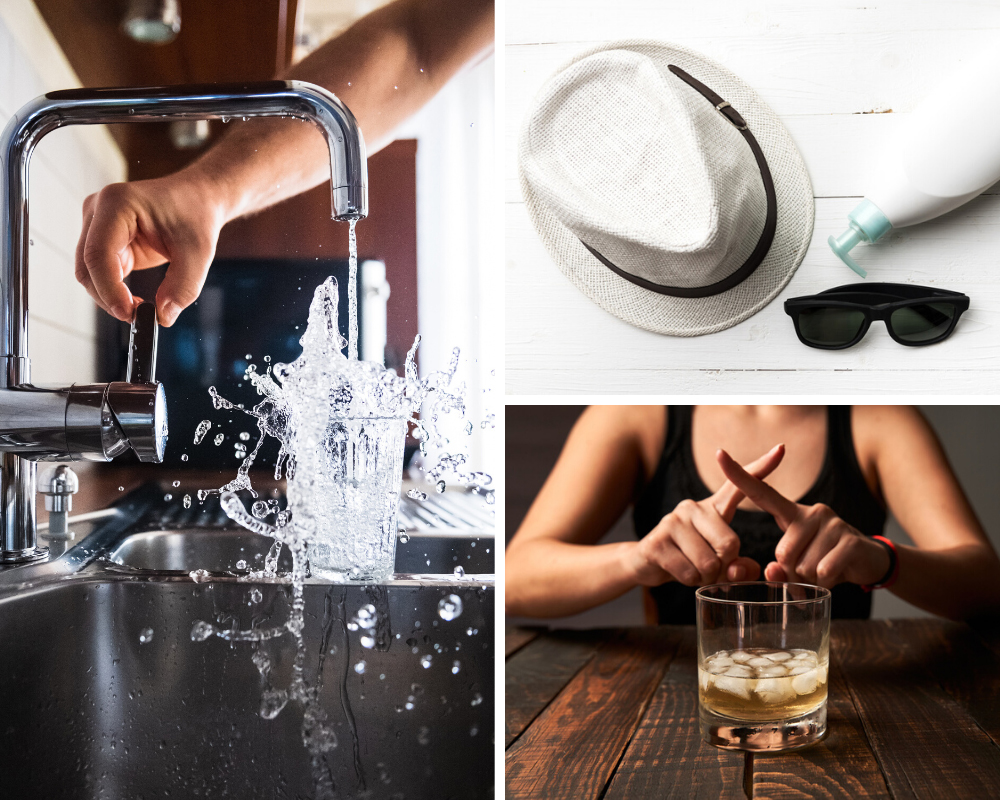Summer has arrived, and for much of the country, that means blazing hot temperatures. For those who work outside either by profession or by choice, it’s time to take extra precautions to prevent heat cramps, heat exhaustion, and heat stroke.
Protecting Yourself from Heat Exhaustion
Heat cramps are the mildest of heat-related medical conditions, and heatstroke is the most severe. Heat exhaustion is the middle ground of your body overheating prior to the life-threatening symptoms of full-on heat stroke.
Ignoring the signs of heat exhaustion can lead to seizures, coma, and death as heatstroke sets in. It’s important that you know the warning signs and how to prevent heat-related illnesses.
Warning Signs of Heat Stroke

Sweating, as well as feeling hot and thirsty, are your body’s natural reactions to spending time in the heat. Reactions that fall outside of the scope of normal include:
- High internal body temperature – Only measured by a rectal thermometer, a temperature of 104°
- Altered mental state – Confusion, slurred speech, agitation
- Change in sweating, or ceasing to sweat – Your skin may feel hot and dry to the touch
- Nausea and vomiting
- Fast breathing
- Red & flushed skin
- Heartbeat racing
- Throbbing headache
If you are with someone who is experiencing any of these symptoms, act quickly. Call 911, get the person inside or into the shade, and cool them by any means possible. A cold bath, ice packs, fans, and misters will all help until medical professionals arrive.
Two Types of Heat Stroke
In older and immune-compromised individuals, prolonged exposure to the heat can bring on heat exhaustion even without physical exertion. But in most cases, heat exhaustion is caused by strenuous activity or exercise in high temperatures.
Factors that contribute to the condition are wearing more clothing than is necessary, drinking alcohol, and allowing yourself to become dehydrated.
10 Tips for Prevention

Preventing heat exhaustion and heat stroke is not difficult, but you’ll want to be extremely vigilant in high temperatures.
- Drink plenty of water (at least 4 cups each hour)
- Protect yourself from the sun, with sunscreen and a hat
- When you can, erect a makeshift shelter over where you are working
- Wear loose and light clothing that does not restrict or overheat your body
- Don’t overexert yourself during the hottest part of the day
- Don’t leave anyone in a parked car for any amount of time
- Give your body time to adjust to hot temperatures – it can take several weeks before your body is acclimated
- Be conscious if the medication you are taking affects your ability to stay hydrated or to sweat normally
- Use fans and misters to keep you cool outside
- Avoid drinking alcohol for extended periods of time in extreme heat
Whether you’re headed outside to enjoy a game of basketball with friends, tend to your garden, or because you have to for work, be proactive in staying cool and hydrated.
If you start to feel overheated, dizzy, or sick to your stomach, get into air conditioning as quickly as you can. As always, stay hydrated during physical activity this summer.
How do you stay hydrated during the summer, especially when you’re outdoors? Share some tips with us in the comments section!
Up Next:
- 5 Tips On How to Stay Hydrated In The Wild
- Dehydration: It’s Even Worse Than You Think
- Heat Stroke vs. Heat Exhaustion: Know the Signs and Symptoms


